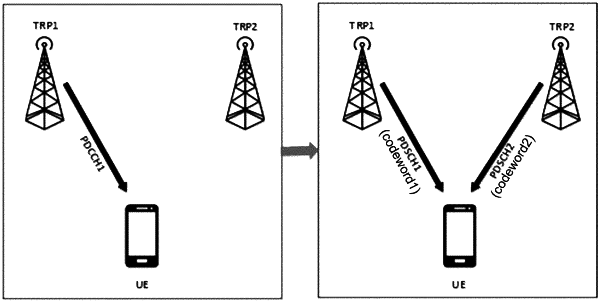| CPC H04W 72/23 (2023.01) [H04L 5/0048 (2013.01); H04L 69/324 (2013.01); H04W 76/27 (2018.02)] | 15 Claims |

|
1. A user equipment (UE), comprising:
a transceiver, which, in operation, receives, on a physical downlink control channel (PDCCH), downlink control information (DCI), the DCI including one or more indicators relating to one or more transmission parameters and a transmission configuration indication (TCI) field; and
circuitry, which, in operation, determines, based on the one or more indicators and on a configuration indicated by the TCI field, the one or more transmission parameters;
wherein
the transceiver, in operation, performs receptions on a physical downlink shared channel (PDSCH) using the one or more transmission parameters for the receptions,
the one or more transmission parameters are determined in reference to a first table for the PDSCH in a case the configuration indicated by the TCI field is for a single state,
the one or more transmission parameters are determined in reference to a second table for the PDSCH different from the first table for the PDSCH in a case the configuration indicated by the TCI field is for multiple states,
values of some entries included in the second table are included in the first table,
those entries included in both the second table and the first table are indicated by the same indices in the second table and in the first table, and
the indices in the second table are represented by the same number of bits used to represent the indices in the first table.
|